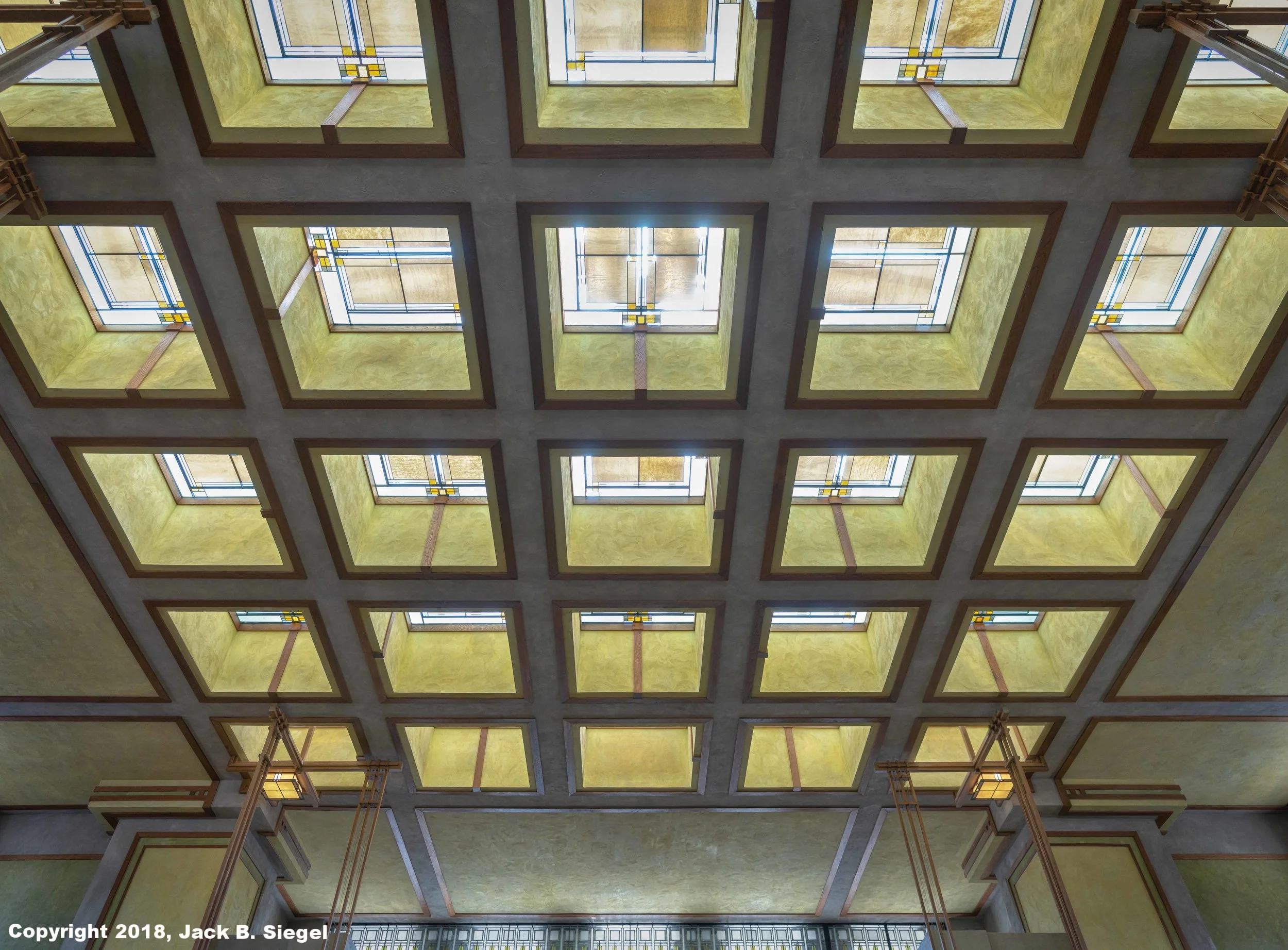Day and Night
“Hog Butcher for the World,
Tool Maker, Stacker of Wheat,
Player with Railroads and the Nation’s Freight Handler;
Stormy, husky, brawling,
City of the Big Shoulders:”
Carl Sandberg gave Chicago the moniker "Hog Butcher for the World." The Union Stockyards were once located on the southwest side of the city. Large steel mills and belching blast furnaces were once located on the far southeast side of the city. Light manufacturing was once everywhere. Those wonderful Hammond B3 organs were manufactured by the eponymously-named company located on Chicago's westside (2915 North Western, and then 4200 West Diversey). As early as the 1880s, Chicago was a major manufacturer of candy confections, with 64 companies dotting the landscape. Cracker Jacks, Juicy Fruit gum, M&Ms, Baby Ruth bars, Brach mellowcremes, Tootsie Rolls, and Lemonheads all originated in Chicago. Holding it all together were the rail and truck lines that crisscrossed the city, dividing and defining neighborhoods.
Today, Chicago has a readily-identifiable skyline, composed of clean and modern office, residential, and retail buildings. Boeing's headquarters is in Chicago, but no planes are manufactured in here. USG (formerly United States Gypsum Company) also calls Chicago home, but it produces nothing in Chicago. Many manufacturers are long gone, seeking cheaper labor in Asia, Mexico, and other corners of the world. Banks, brokers, lawyers, consultants, media professionals, and software companies fill the resulting void. But travel beyond the Loop and the lakefront and you can still see small machine shops and light manufacturers dotting the landscape, often in decades-old brick buildings, with large tinted glass and rusted iron windows.
Today I had the opportunity to photograph the contrast between old and new when I visited a furniture and fixture manufacturing company and a metal grinder and fabricating plant, both located within a block of each other on Chicago's far west side. It was night and day. The furniture and fixture company was in a large building with painted white walls and immaculate floors. Use the power saw, immediately sweep the floor. Its workshop comprised largely of what millennials, one with a well-manicured beard and tats on both arms. The workspaces were filled with tool sets, drills, and saws. All clean and modern. The business office was located in an open space with attractive work areas that could have been manned by software engineers--I suspect some of the desks were design stations. The lunchroom walls still had brick walls with the vintage signs painted on them, but the space clearly was used by the hip workforce.
The facility had a peaceful and serene air about it despite the drills and saws. No string-based elevator music for these folks. Tasty contemporary music could be heard wafting above the space. A rather hip bicycle hung on one post--its frame had obviously been manufactured in this space. On another post, a yellow skateboard hung from a peg.
The steel fabrication plant was far grittier. Carbon caked the walls, together with grease. The first room I visited had large machines that used fire and cool water to fabricate large steel plates to be used as parts in robotic systems. The operation of large cranes and hoists moving the pieces from station to station was surprisingly quiet. The next room was dark, with patches of whitish-yellow projected by the frosted windows lining the top of the cavernous space. Sparks flew from three work areas as laser hot torches cut metal. Steam rose as one worker cooled the hot steel plate with neat rows of holes that had just been cut.
In the last room, grinders and blow torchers were used to finish the rough steel. One gentlemen circled what looked like an upside down table with a grinder in his hands. Stand back. He was squeezing out sparks. I had to quickly look away when one worker lit his blowtorch. White light, white heat.
Dressed in overalls and wearing work boots, the folks who manned the machines and fork lifts created what at first looks like a sharp contrast with the younger crowd at the furniture and fixture manufacturer. This was more traditional manufacturing--dirtier by its nature. Wood is much softer than steel. Both workforces, however, shared much in common. Both took their jobs seriously, devoting great attention and care to finishing surfaces and edges.
Photographer's Note: Thanks to Howard, my workshop mate, for arranging the outing. He saved the best for last. I'll be dining with one of Howard's other sons next week at the son's restaurant in Paris. See you March, Howard.
The photographs were made using my Fuji GFX 50s, with a 110mm lens, and the new Sony A7Riii. This was my first outing with the Sony. It far more solid than that A7Rii. The larger battery is much appreciated. Sony has also been listening. The menu system is still far too complicated, but Sony has simplified it a bit. It only took my an hour to customize it. The files that came out of the camera were spot on. Color reproduction in low light is excellent. I did not use pixel shift.
In Motion
White Light, White Heat
Ball Oiler
Stalactites
Clean and Jerk
Beween
Into the Void
Ten-Ton Magnet
Wheel of Fortune
On-Off
Near the Destination
Leftovers
The Cutting Edge
The Patriotic Welder
Tachi
The Wrangler
Into the Supply Closet
The Gomberk Box
A Room Without a View
Amacord
New Within Old Visions
In His White Room





